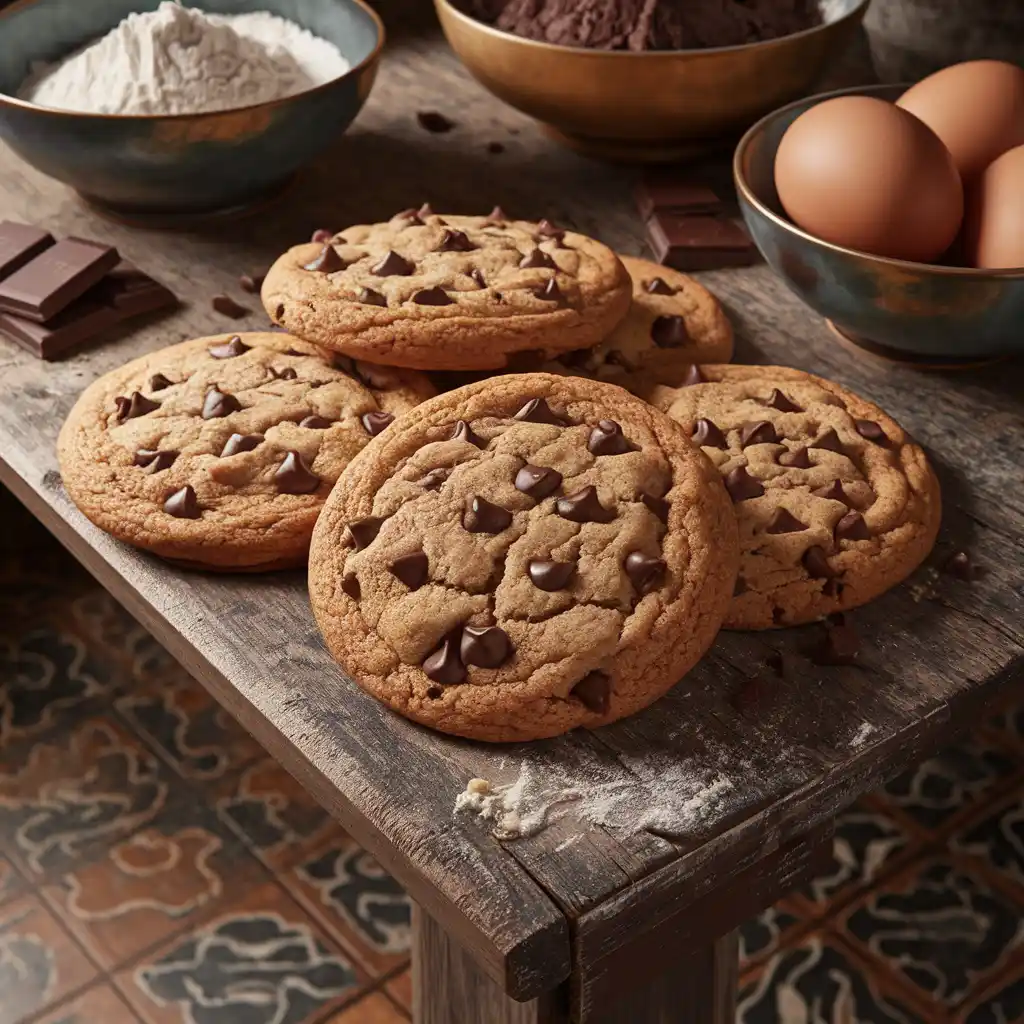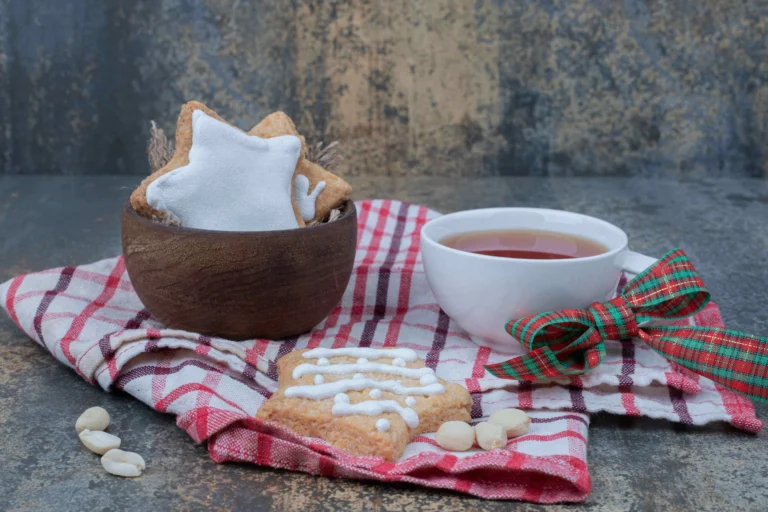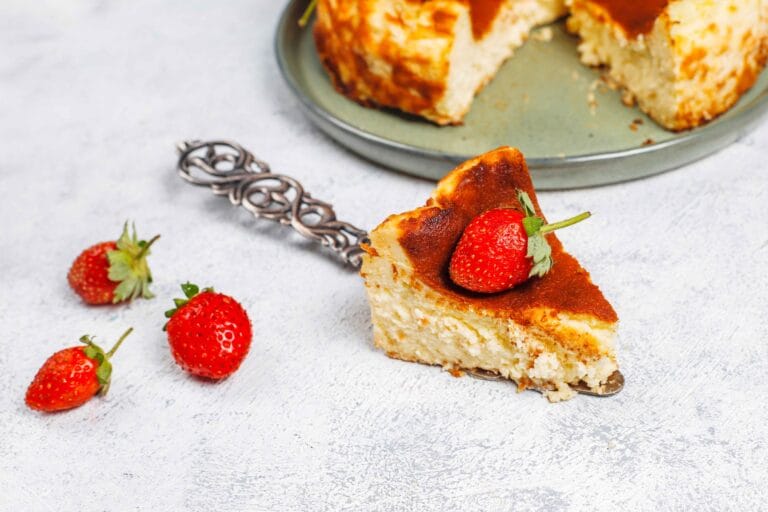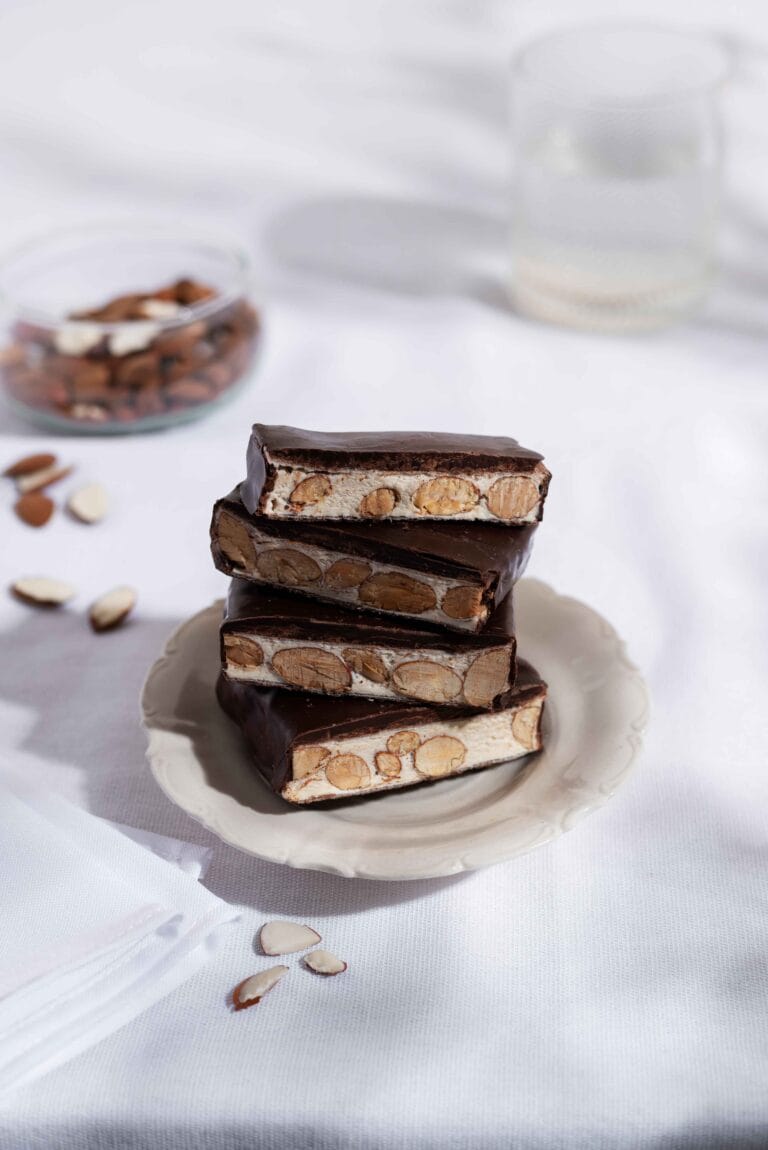How Much Did Ruth Wakefield Sell Her Recipe For?
Ruth Wakefield is a name that echoes through the halls of culinary history, tied forever to one of the most beloved treats in the world: chocolate chip cookies. As the inventor of the iconic Toll House cookie recipe, she not only created a timeless dessert but also left an indelible mark on baking culture. But the question many often ponder is this: how much did Ruth Wakefield sell her recipe for?
This question opens the door to a fascinating tale of innovation, business acumen, and cultural impact. Ruth Wakefield’s Toll House recipe wasn’t just a simple concoction; it was a groundbreaking idea that reshaped American kitchens and led to one of the most successful partnerships in food history.
In this article, we’ll delve into the life of Ruth Wakefield, the details surrounding her famous recipe’s sale, and the ripple effects it caused in the culinary world. From the specifics of her transaction with Nestlé to the enduring legacy of her creation, we’ll explore every facet of this remarkable story.
Chocolate chip cookies, much like Mama Kelce’s cookie recipe, have fascinating stories tied to their creation.
The History of Ruth Wakefield
The Early Life of Ruth Wakefield
Ruth Graves Wakefield was born on June 17, 1903, in East Walpole, Massachusetts. From an early age, she displayed an interest in the culinary arts, but her initial career path was quite different. She earned a degree in household arts from Framingham State Normal School (now Framingham State University), where she studied to become a dietitian and food lecturer. This background gave her a scientific understanding of food preparation, a skill that would later prove invaluable.
Wakefield worked as a dietitian and food lecturer for several years before transitioning into a new phase of her life. Her practical knowledge of food chemistry and nutrition made her a respected figure in her field. However, her entrepreneurial spirit pushed her to explore the culinary world beyond academia.

Ruth Wakefield and the Toll House Inn
In the early 1930s, Ruth and her husband, Kenneth Wakefield, purchased a historic property in Whitman, Massachusetts, and converted it into a tourist lodge known as the Toll House Inn. The inn quickly gained a reputation for its welcoming ambiance and, most notably, its food. Ruth Wakefield managed the kitchen, where her culinary creations became a major attraction for travelers.
Wakefield was known for her innovative recipes, which often fused traditional New England flavors with modern techniques. Her attention to detail and commitment to quality made the Toll House Inn a must-visit destination, and her recipes became a hallmark of the experience.
The Creation of the Toll House Cookie
The invention of the chocolate chip cookie occurred in 1938 and has long been shrouded in myth. The most famous story claims that Wakefield accidentally created the recipe while attempting to make a batch of chocolate butter cookies. Running out of baker’s chocolate, she substituted pieces of a Nestlé semi-sweet chocolate bar, expecting them to melt evenly into the dough. Instead, the chocolate pieces held their shape, creating the iconic “chocolate chip” texture.
However, Ruth Wakefield herself debunked the idea that it was an accident. In interviews, she stated that the recipe was a deliberate experiment. She wanted to create a new kind of cookie, something distinct from the traditional offerings. By incorporating semi-sweet chocolate chunks into a rich, buttery dough, she achieved a perfect balance of texture and flavor.
The Toll House Cookie Recipe Goes Public
The chocolate chip cookie quickly became a hit among the inn’s patrons. Guests requested the recipe, and word of the Toll House cookie began to spread. Newspapers and magazines featured the recipe, further cementing its popularity.
The real turning point came when Ruth Wakefield’s recipe caught the attention of Nestlé. As the demand for Toll House cookies soared, home bakers turned to Nestlé’s semi-sweet chocolate bars to replicate the famous treat. This set the stage for one of the most famous culinary partnerships in history.
Selling the Recipe
The Transaction Details
The partnership between Ruth Wakefield and Nestlé was groundbreaking, not just for the culinary world but also as a savvy business deal. As the Toll House cookie recipe grew in popularity, Nestlé recognized an opportunity. Home bakers were purchasing their semi-sweet chocolate bars specifically to replicate Ruth Wakefield’s recipe, making it a natural fit for Nestlé to approach her.
In 1939, Ruth Wakefield agreed to a deal with Nestlé that remains one of the most fascinating chapters in food history. Contrary to some popular myths, she did not sell her recipe outright for a lump sum or a trivial amount of money. Instead, the transaction was a strategic exchange: Wakefield granted Nestlé the rights to print her Toll House cookie recipe on their chocolate packaging. In return, she received a lifetime supply of Nestlé chocolate—a unique agreement that was both practical and symbolic.

What Ruth Wakefield Received
While the lifetime supply of chocolate was the most publicized part of the deal, it’s important to note that Ruth Wakefield likely benefited in other ways. She maintained her status as the creator of the recipe and continued to gain fame for her culinary achievements. However, she did not receive royalties or a direct financial stake in Nestlé’s success from the cookies, a fact that some modern commentators have criticized given the monumental impact of her invention.
The deal, though unconventional by today’s standards, was groundbreaking at the time. It marked one of the first instances of a recipe becoming commercialized on such a massive scale, with the creator’s name and story prominently featured.
The Myth vs. Reality
Over the years, many misconceptions have surrounded the deal between Ruth Wakefield and Nestlé. One popular myth suggests that she sold the recipe for just $1. This is not true; the lifetime supply of chocolate was far more valuable and symbolic than a nominal cash payment. However, this misunderstanding has persisted, perhaps due to the simplicity of the narrative.
The reality is more nuanced. Ruth Wakefield’s partnership with Nestlé was not purely financial. It was also about mutual benefit and recognition. By allowing Nestlé to print her recipe, she ensured that her name and the Toll House brand would remain synonymous with chocolate chip cookies for generations.
The Role of the Nestlé Toll House Chocolate Chip
As part of the deal, Nestlé developed and introduced their now-famous semi-sweet chocolate morsels, which made it even easier for home bakers to replicate the Toll House cookie recipe. These morsels, or “chips,” became a staple in American kitchens and contributed significantly to Nestlé’s growth in the U.S. market.
The success of the morsels and the Toll House cookie recipe cemented the partnership as one of the most effective marketing campaigns of the 20th century. By including the recipe on every package, Nestlé ensured that Ruth Wakefield’s creation became a household name.
A Missed Opportunity or a Win-Win?
Looking back, some argue that Ruth Wakefield could have negotiated a more lucrative deal, perhaps securing royalties or a more direct financial benefit from the success of her recipe. However, others view the deal as a win-win situation. Wakefield gained enduring fame, and her creation became a cornerstone of American culinary culture. Nestlé, on the other hand, reaped enormous financial rewards, solidifying their place in the U.S. chocolate market.
Despite the debate, there’s no denying that Ruth Wakefield’s Toll House cookie recipe became an integral part of Nestlé’s brand identity and a symbol of innovation in baking.
Cultural Impact of Toll House Cookies
Popularity Boom in the 1940s
The Toll House cookie recipe quickly became a sensation across the United States, particularly during the 1940s. As Nestlé included Ruth Wakefield’s recipe on its chocolate packaging, the cookies reached kitchens far and wide. During World War II, soldiers stationed abroad wrote home, requesting care packages that included these homemade treats. This inadvertently spread the fame of the Toll House cookie internationally, as families shared the recipe with friends and neighbors.
At a time when comfort food was deeply valued, the chocolate chip cookie became a symbol of warmth, nostalgia, and American ingenuity. The recipe was simple enough for home bakers of all skill levels, ensuring that anyone could replicate Ruth Wakefield’s creation with ease.
Impact on American Culture
The Toll House cookie is not just a dessert; it’s a cultural phenomenon. By the mid-20th century, chocolate chip cookies were a staple in American households, often baked during holidays, family gatherings, or simply as an after-school treat. The cookies became deeply associated with the idea of “home,” representing comfort and tradition.
The recipe’s inclusion on Nestlé packaging further reinforced its cultural significance. It was a shared experience for many Americans, uniting them in their love for a universally beloved treat. Over time, the Toll House cookie evolved into a cornerstone of American identity, symbolizing creativity and resourcefulness.
Toll House Cookies in Media and Advertising
Nestlé’s clever marketing campaigns played a significant role in solidifying the Toll House cookie’s cultural impact. Advertisements from the 1940s and 1950s highlighted the ease of making the cookies, portraying them as a wholesome activity for families. Images of smiling children and happy mothers baking Toll House cookies became iconic, strengthening the association between the dessert and family values.
In popular media, chocolate chip cookies began to appear as a shorthand for comfort and love. From TV shows to movies, characters often referenced or shared chocolate chip cookies as a way to express care. This further cemented the dessert’s role as an emotional touchstone in American culture.
Contributions to Nestlé’s Success
Ruth Wakefield’s Toll House cookie recipe was a major factor in Nestlé’s rise to prominence in the U.S. chocolate market. The introduction of semi-sweet chocolate morsels revolutionized baking, making it easier for consumers to recreate the iconic cookies. Nestlé’s decision to feature the recipe on their packaging ensured that their brand became inseparable from the chocolate chip cookie phenomenon.
The financial success of Nestlé’s morsels and the Toll House brand far exceeded initial expectations. By leveraging Ruth Wakefield’s recipe, Nestlé transformed a simple idea into a billion-dollar business. The recipe’s influence can still be seen today, as Nestlé Toll House remains a leading name in baking products.
The Toll House Name and Legacy
The Toll House Inn itself became a pilgrimage site for chocolate chip cookie enthusiasts. Visitors flocked to Whitman, Massachusetts, to experience the birthplace of the iconic recipe. Although the original Toll House Inn burned down in 1984, its legacy endures through the countless cookies baked in homes around the world.
Today, the phrase “Toll House cookie” is synonymous with chocolate chip cookies, a testament to Ruth Wakefield’s genius. Her invention continues to bring joy to millions, proving that a simple idea can have a profound and lasting impact.
These cookies have achieved iconic status, similar to Mama Kelce’s Super Bowl Cookies that capture the spirit of celebration.
Modern Legacy of Ruth Wakefield’s Recipe
Evolution of the Recipe
Ruth Wakefield’s original Toll House cookie recipe was groundbreaking for its time, but it has undergone countless adaptations since its creation. Bakers around the world have modified the ingredients, proportions, and techniques to suit their tastes. Variations include adding nuts, substituting dark or white chocolate, or incorporating unique ingredients like peanut butter, oatmeal, or even sea salt.
Some recipes emphasize a chewy texture, while others focus on creating a crisp bite. Despite these changes, the essence of the original recipe—a buttery dough with chocolate chunks—remains intact. This adaptability has helped the Toll House cookie stay relevant and beloved for generations.
Adaptations and Variations Globally
While the Toll House cookie began as an American creation, its appeal quickly spread internationally. Countries have embraced the recipe, adding local twists to make it their own. For example:
- In Europe, some bakers use rich European-style butter and dark chocolate with a higher cocoa content for a more intense flavor.
- In Asia, Toll House-inspired cookies are often made with less sugar and incorporate flavors like matcha or sesame.
- In Latin America, dulce de leche or cinnamon might be added to the dough for a unique spin.
These global adaptations showcase the versatility of Ruth Wakefield’s creation and its ability to transcend cultural boundaries.
A Lasting Culinary Legacy
Ruth Wakefield’s contribution to baking extends beyond the Toll House cookie. Her inventive spirit and willingness to experiment set a standard for home bakers and professionals alike. The Toll House cookie is often one of the first recipes aspiring bakers learn, serving as a gateway to more complex culinary adventures.
Wakefield’s recipe also paved the way for the commercialization of home-baking products. The success of Nestlé’s semi-sweet morsels inspired other companies to develop prepackaged baking aids, revolutionizing the way people approached homemade desserts.
How the Recipe Influences Baking Today
In modern kitchens, the Toll House cookie recipe continues to inspire innovation. Contemporary bakers experiment with gourmet ingredients, such as artisanal chocolates, organic flours, and specialty salts. High-end bakeries often offer their take on the chocolate chip cookie, elevating it to a luxury item.
Social media has further amplified the recipe’s legacy. Platforms like Instagram and TikTok are filled with videos showcasing creative takes on chocolate chip cookies, ensuring that Ruth Wakefield’s invention remains a central part of baking culture.
Enduring Popularity of the Toll House Brand
The Toll House brand remains a cornerstone of Nestlé’s product line. From pre-made cookie dough to chocolate chips, the brand has expanded significantly while maintaining its connection to Ruth Wakefield’s original recipe. Nestlé Toll House products are a staple in grocery stores, demonstrating the enduring demand for the classic chocolate chip cookie.
The name “Toll House” is now synonymous with quality and tradition, a testament to the strength of the brand that Ruth Wakefield helped create. Whether baked from scratch or purchased ready-made, Toll House cookies continue to bring joy to families around the world.
Ruth Wakefield’s original recipe paved the way for countless adaptations, just as modern favorites like Taylor Swift’s favorite cookies continue to innovate classic flavors.
FAQs
When did Ruth Wakefield sell her recipe to Nestlé?
Ruth Wakefield sold the rights to her Toll House cookie recipe to Nestlé in 1939. This transaction allowed Nestlé to print her famous recipe on their semi-sweet chocolate packaging, solidifying the cookie’s status as a household staple.
How much did Toll House cookies cost in 1939?
In 1939, the cost of making Toll House cookies was relatively modest. A typical batch required basic pantry staples like butter, sugar, eggs, and flour, alongside a Nestlé semi-sweet chocolate bar. While exact prices varied by region, the total cost for ingredients was likely less than a dollar—making it an affordable treat during the Great Depression era.
What cookie was not invented until 1938?
The chocolate chip cookie, specifically the Toll House cookie, was invented in 1938 by Ruth Wakefield at the Toll House Inn. It was a revolutionary creation that combined semi-sweet chocolate chunks with a buttery cookie dough, becoming an instant classic.
What are some interesting facts about Ruth Wakefield?
- Ruth Wakefield was a trained dietitian and food lecturer before becoming a legendary baker.
- She deliberately experimented to create the Toll House cookie, debunking the myth that it was an accidental invention.
- Her agreement with Nestlé involved receiving a lifetime supply of semi-sweet chocolate rather than monetary royalties.
- Wakefield authored a cookbook, Ruth Wakefield’s Toll House Tried and True Recipes, which became a bestseller and further popularized her cookie recipe.
Conclusion

Ruth Wakefield’s Toll House cookie recipe is more than just a culinary invention—it’s a cultural phenomenon that has stood the test of time. From its origins at a small Massachusetts inn to its status as a global icon, the chocolate chip cookie remains a beloved treat for people of all ages.
While the details of Wakefield’s agreement with Nestlé might spark debate about the value of her contribution, there’s no denying the monumental impact of her creation. She revolutionized home baking, inspired countless adaptations, and built a legacy that continues to delight generations.
Today, the Toll House cookie represents more than just a dessert. It’s a symbol of ingenuity, tradition, and the universal love for a simple yet perfect combination of flavors. Ruth Wakefield’s story reminds us that sometimes, a single recipe can change the world.







